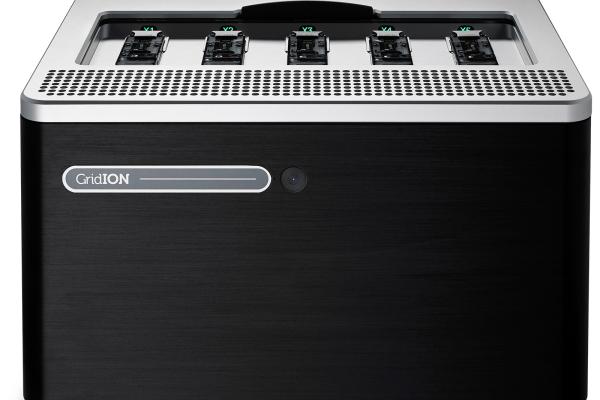
The Sequencing and Genomic Technologies (SGT) Core Facility recently added an Oxford Nanopore GridION long-read sequencer to its arsenal. The GridION provides cost-effective, ultra-long sequencing reads of hundreds of kilobases to help answer research questions that short read sequencers cannot.
“Parts of the genome are difficult to sequence because they are very long and repetitive,” associate director of SGT Devi Swain-Lenz said. “GridION provides longer stretches of DNA or RNA sequencing so researchers can get a fuller picture of what is happening in that genetic material.”
A short read sequencer, like Illumina, can provide a sequence of 150-300 base pairs. Long read sequencers like GridION, though, can provide a sequence of 10,000 base pairs, which not only provides the sequence but also where that sequence lands in the genome.
Beth Sullivan, PhD, professor of molecular genetics and microbiology, has found GridION technology invaluable in her research. Research in the Sullivan lab focuses on centromeres, which are constricted regions of a chromosome that play a key role in helping the cell divide up its DNA during cell division. Human centromeres are composed of a 171 base pair sequence that is repeated thousands of times on every chromosome.
“Because the sequences are very similar,” Sullivan said, “short read sequencing will allow you sequence the repeats but not place them in position across the genome assembly.”
If a chromosome is a bus, the centromere is the bus driver that moves the chromosome during cell division. Some centromeres are excellent drivers, some are mediocre, and others are poor. “We know that sequence variation at some human centromeres correlates with poor centromere function,” Sullivan said, “which can lead to loss of chromosomes, cancer, infertility and birth defects.”
Sullivan is using GridION to assemble and analyze the DNA sequences of excellent, mediocre, and poor centromeres to gain a better understanding of their genomic differences. This work could become very valuable to researchers studying a variety of diseases like cancer and reproductive abnormalities.
“Right now, we don’t even know what it means to be a mediocre centromere,” Sullivan said. Because of the repetitive nature of human centromere DNA sequences, a mutation or variant, is present in thousands of copies. The number and placement of these changes or variants across 2-5 million base pair stretches can affect how well a centromere performs. “The truth is, right now we don’t know the full functional impact of this repetitive sequence variation,” Sullivan said, “because we’ve never had the ability before now to capture what those changes look like in expansive repetitive regions,” GridION is helping them see the whole picture.
GridION is ideal for Sullivan’s work and other researchers investigating big genomes like those of mammals and humans, or studying neurological disorders, that are associated with long strings, or amplifications, of repeated sequences. But it can also help sequence the little guys, like bacteria. Nanopore sequencing has been recently shown to provide accurate reads of bacterial genome sequences without any other accompanying sequencing technology.
It can also accomplish enrichment or adaptive sequencing. Sullivan has used this feature to preferentially sequence the human DNA in humanized mouse cells. GridION can recognize the mouse DNA from the human DNA, so when the machine reads mouse DNA, it reverses the flow of the pore and pushes that DNA out so another, hopefully human, DNA molecule can come in. Adaptive sequencing repeats that process until all the human DNA is read. That same concept could be applied to other studies, like investigating the gut microbiota and sequencing a specific type(s) of microbiota found in the microbiome.
With its many features and function, GridION has become a cost-effective way receive long accurate native reads of DNA and RNA in a host of applications.
Representatives from Oxford Nanopore will be at Duke on September 19 to discuss several of GridION’s capabilities. This event is open to all Duke researchers at any stage in their educational/research careers.
To discuss GridION and your specific project in more detail, contact the Sequencing and Genomic Technologies Core Facility.